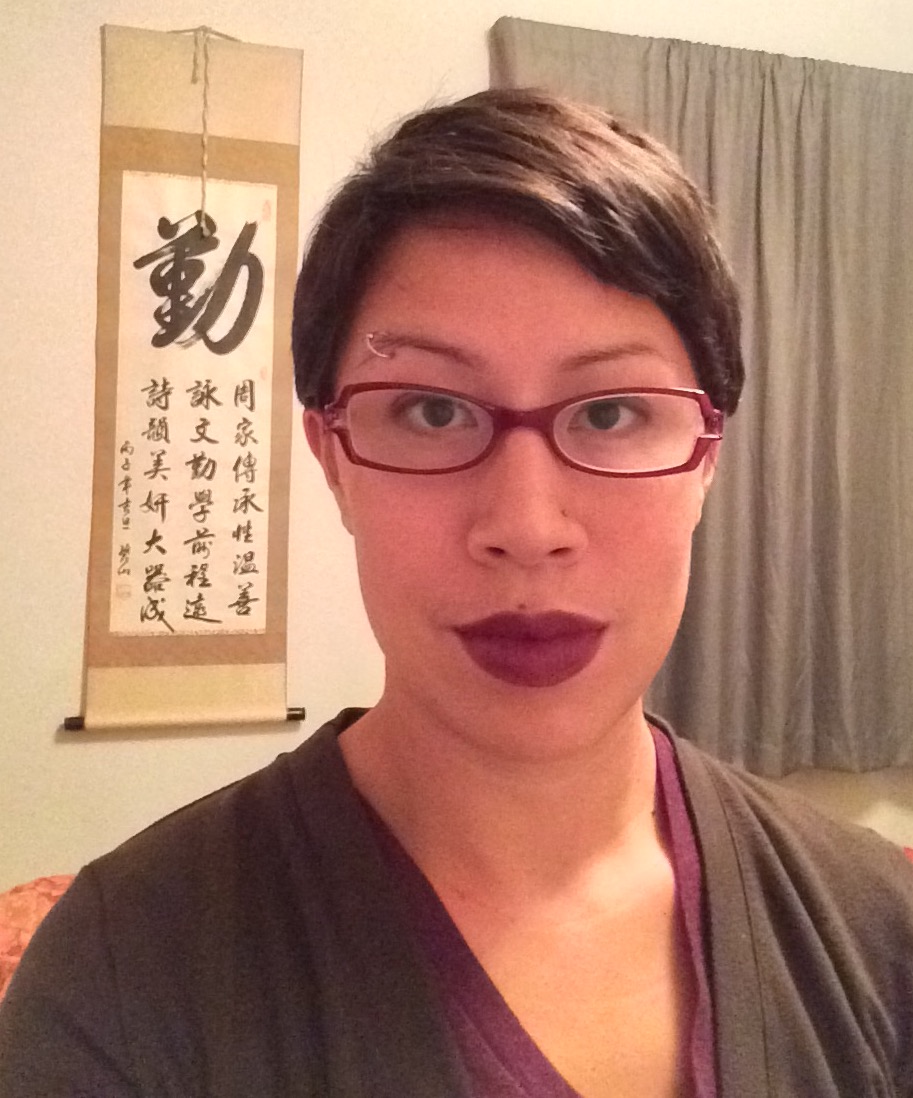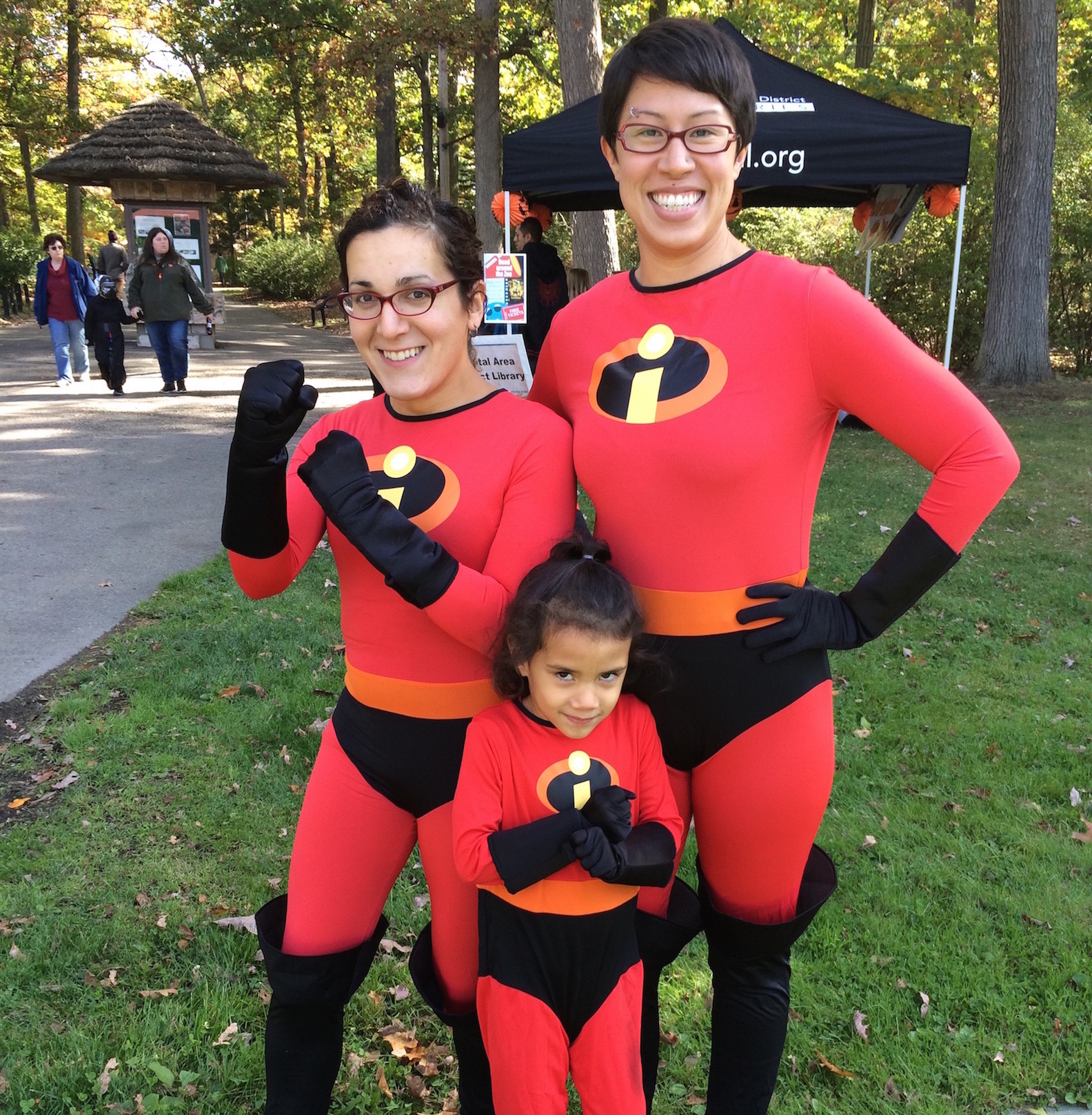This genderqueer person helps others better understand gender identity, including their own.
This is part of a story series about the lives of transgender people. Read the introduction here.
 Ask yourself this question: What gender do you use to identify yourself? You may easily respond with “female” or “male.” But then ask yourself: What does that mean?
Ask yourself this question: What gender do you use to identify yourself? You may easily respond with “female” or “male.” But then ask yourself: What does that mean?
Amanda Niven asked me those two questions, and after I said I identify as female, I didn’t really know how to answer the second question. I was born female and have always identified as such. But why, exactly?
It’s not an easy question to answer, even for someone who has never grappled with my gender identity, and it’s something I’ll continue to reflect on. Niven often poses these questions to help others understand what it’s like when gender non-conforming people — those who don’t follow conventional ideas about how they should look or act based on the gender they were assigned at birth — are asked to describe their gender identity.
Niven is one of those people, and often presents workshops to help others understand what it means to be genderqueer, the term Niven prefers for self-definition.
“People think they have an idea of what a binary trans identity is, and then here comes me throwing a wrench in the works,” says Niven, who also likes the term “gender-expansive.” Others use the term “non-binary.”
Niven, who prefers not to use gender pronouns (but uses they/them/theirs when needed), usually draws on a whiteboard when explaining their personal experience, while emphasizing that it’s not the experience of every gender non-conforming person.
I start with two circles — man and woman — with a line connecting them, speaking to the spectrum. If man and woman are opposite identities, then you could identify as man, woman, something in between or a combination.
Then I take them for a ride and say, ‘This is still a binary. The spectrum is useful in terms of visualizing gender using the framework we have. But it’s not always useful for people who are like me, in that I’m not binary. I don’t identify as man or woman.’
Then I draw a squiggle in the corner of the whiteboard. That’s me. It’s hard to get from what we have to what we don’t — we don’t have a way to describe that or language to talk about that. But if we can move from binary to spectrum and there’s something further from that, it’s called genderqueer.
Niven, who was assigned female at birth, didn’t always identify as genderqueer, although there was a feeling of being different. But growing up, Niven says that wasn’t top of mind, because of an unpredictable childhood environment. As a young adult, Niven married a man and had a child, who is now five years old. The marriage ended amicably, after which Niven began to identify as bisexual or pansexual (which means not limited in sexual choice by biological sex, gender or gender identity), but admits that didn’t feel quite right.
“I couldn’t put my finger on it,” says Niven, who is now 31, “but it was the best I could do.”
A couple years after getting divorced, Niven met their current partner and fiancée, who is a transgender woman. As they were getting to know each other, Niven began wondering if “transgender” was the right identity.
“We had a lot of conversations about it and I thought I might be ‘gendery’ — a term I made up, because I don’t like to say there’s something different about my gender,” Niven says. “I don’t like to place cisgender as the norm then other things as an aberration. Something’s up with my gender. I’m gendery.”
Considering how many people still don’t understand what it means to be transgender — or even the definition of cisgender, which means identifying with the gender you’re assigned at birth — Niven knows it will take time for the average person to understand what it means to be genderqueer. But Niven is dedicated to educating people, even while acknowledging that gender is only one aspect of anyone’s identity.
We’re more than our gender. We have trials and tribulations, joys and sorrows.
I’m tempted to say I’m just like everyone else, but I’m not. I’m just like me. But there are a lot of people like me who don’t even have visibility. I just want people to know we exist, and we’re people.
Genderqueer and other gender non-conforming people do face some of the same challenges transgender people do, such as discrimination. So-called “bathroom bills” can present a danger similar to those faced by transgender people who might be seen as using the “wrong” bathroom.
“Given our current state of politics, when I’m out in public, I worry,” Niven says. “If I’m walking down the street, driving my car, choosing a bathroom — I worry. There’s not usually a unisex or gender-neutral bathroom.”
Niven has been an advocate, activist and educator for a number of years, work that continues. “There’s a lot of education still to be done,” Niven says.
 Niven and their partner established Greater Lansing Umbrella, an organization that’s dedicated to building community and resources for gender and sexual diversity in Lansing. Niven also ran the Trans Leadership Project funded by the Unity Michigan Coalition. Along with collecting signatures from local leaders to support amending Michigan’s Elliott-Larsen Civil Rights Act to include LGBTQ people, Niven spearheaded an initiative to train transgender people in self-advocacy, power mapping and more.
Niven and their partner established Greater Lansing Umbrella, an organization that’s dedicated to building community and resources for gender and sexual diversity in Lansing. Niven also ran the Trans Leadership Project funded by the Unity Michigan Coalition. Along with collecting signatures from local leaders to support amending Michigan’s Elliott-Larsen Civil Rights Act to include LGBTQ people, Niven spearheaded an initiative to train transgender people in self-advocacy, power mapping and more.
Niven currently works as a freelance sign language interpreter — you may have seen Niven putting this skill into practice at the Michigan Pride Rally in Lansing the last few years — and is training to become a yoga instructor, too. In addition, Niven continues with a variety of advocacy initiatives, including a program to connect transgender adults and children.
“It helps a lot for kids to know there are trans adults out there,” Niven says, “and to know that everything is going to be okay.”
Emphasizing that gender is just one aspect of anyone’s identity, Niven adds that other aspects of identity can’t be shoved into neat little boxes, either. For example, Niven and their partner don’t identify as lesbian, even though that’s how others often perceive the couple. Niven is half Chinese, so race is an important aspect of identity, too.
But when it comes to gender, consider this: The definitions of “masculine” and “feminine” aren’t the tidy categories you might think, as Niven explains.
Womanhood and femininity and manhood and masculinity aren’t the same things. Make a list of what’s feminine and what’s masculine — and why. Are those things inherently masculine or feminine? No. It’s the way society decided it would be. Certain things are feminine and without power and other things are masculine and held up. Masculine and feminine aren’t really helpful when it comes to who we are inside. But it’s really difficult to wrap your mind around something you have no experience of.
Ultimately, Niven doesn’t want to be identified by gender alone, but recognizes that acceptance of genderqueer and gender non-conforming people is going to take some time and continued advocacy.
“I’m my gender. I’m my race. I’m many things. It’s not all my gender,” Niven says. “I don’t expect that I’ll ever see what people call ‘gender liberation’ in my lifetime. But my hope is that by sharing my story and helping people understand their own gender, that someday that can happen for someone. It’s a long journey and we’ve only just begun.”
Read all the stories in this series HERE.
[Photos courtesy of Amanda Niven.]



